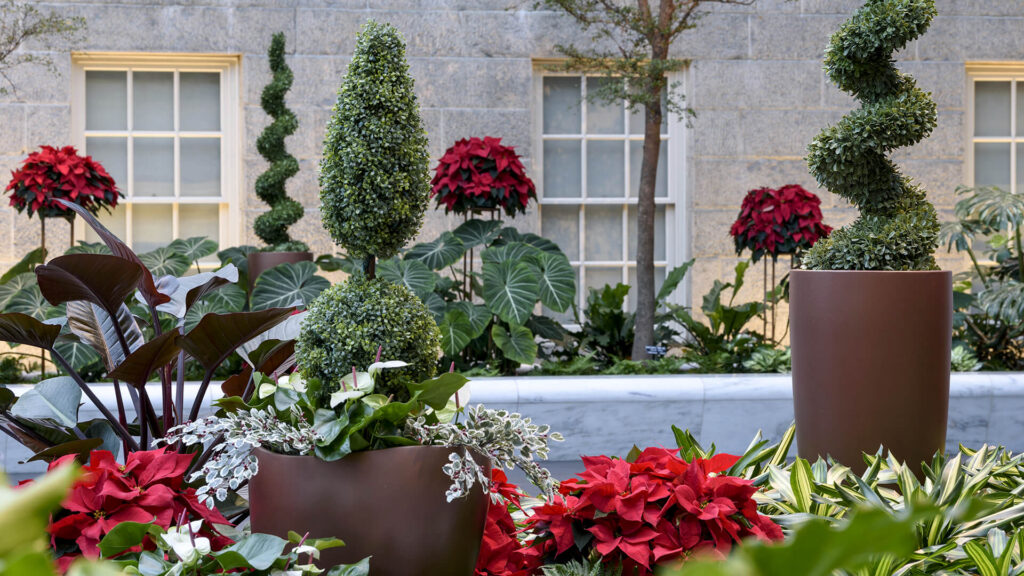Living collections include botanical gardens, living culture collections, zoos, living anthropod collections, aquariums, and living museums. The attraction of living museums to the general public is immense. In fact, many living museums play a major role in contributing to local and national economies. They also contribute to scientific education, research, conservation, experimental research plots, and seed bank efforts. Despite the ever-growing contributions of living collections, there are also aspects of complications.
Different living collections will incur slightly different challenges from one another. To start off, botanical living collections have a heavy cost complication in construction and the upkeeping of such structures (i.e., it is astronomically expensive to establish and maintain botanical gardens). Costs and funding for the energy, water, and maintenance of urban pollution make it incredibly hard for botanical gardens to function. If there is no source(s) of funding, then there will be no more botanical gardens due to the expensive costs of resources used to maintain the ‘living’ status of collections. Lack of space and stricter plant immigration laws or permitting processes make it harder for botanical gardens to continue growing collections or perhaps propagate collections for conservation purposes.
Complications of living culture collections, zoos, living anthropod collections, and aquariums mainly involve the costs of maintenance for living quarters of animals and ethical laws of animal transportation. Living culture collections have the complications of expensive costs associated with time and resources. The success of living cultures is not one hundred percent guaranteed and contamination is a big complication that is easily done but not easily detectable until end results. Living anthropod, zoos, and aquarium collections face the complications of costly and laborious maintenance in animal diets and ensuring correct enclosures of animals are maintained to the accurate settings. Familiarity with permits for obtaining collections is also another complication that can affect the stability of an institution emphasizing live collections.
Question: If you had an almost infinite source of funding, what living collection would you choose to exhibit and why?

Hi Rose!
I really like your post especially how you go in depth with the botanical gardens which I found interesting. To answer your question, I really don’t know how to answer it. For me, I tend not to think about money and funding things especially with collections. Mostly I would just be content of what I’m given with even in regards of collections. Come to think about it, on the topic of botanical gardens and even zoos, I would probably want to fund a botanical garden for live plants, harmless fungi, and animals that were previously in abused homes and collections. I would rather help find a better home for plants and other specimen compared to starting a new botanical garden or zoo all together. I don’t know if that answers your question but I can tell you that I had a blast reading your post!
Hey Rose, I like how you have formatted your discussion! I agree with what you have to say on what living collections museums face. If I had unlimited funding I would choose to exhibit native plants here in Alaska and what their uses were in the past vs if we still use them today, I would interview Alaskan Native Elders to document what they have heard or used themselves. I know articles and journals do exist on such things, I would just make an exhibit so people can go and visit rather search up the article or book, they learn in person by either making the item themselves or learning how to properly preserve it, while being immersed in the culture.
I think that I would want to make an exhibit of some paleo-type plants. Plants from the Paleo time period are cool, and it would be cool to be able to be able to see those plants again. I know that we don’t really have the seeds of those plants, but hey, infinite funding.
If I had unlimited funding and resources, I would utilize those to create a garden focused on air
purification plants which include things like English ivy, aloe vera, spider plants, peace lily, reed palm, and weeping fig. I would also try to incorporate unique and visually intriguing plants as well.